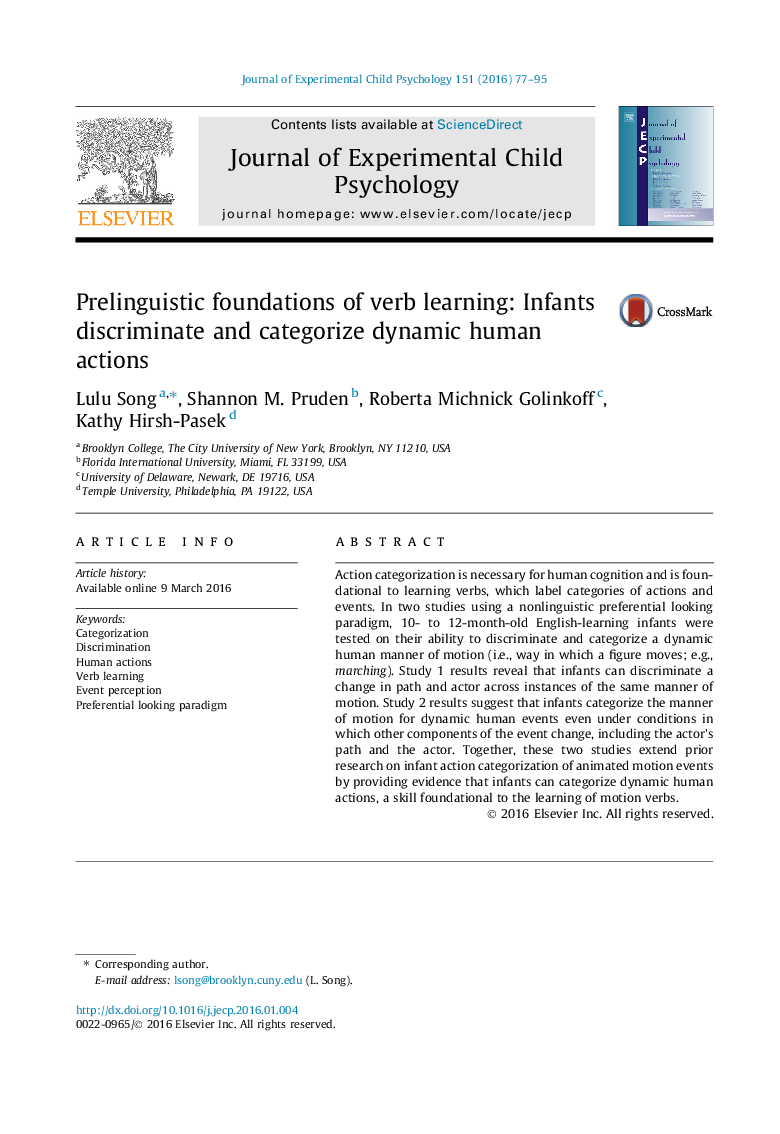| Article ID | Journal | Published Year | Pages | File Type |
|---|---|---|---|---|
| 5040088 | Journal of Experimental Child Psychology | 2016 | 19 Pages |
â¢We examined infants' prelinguistic foundations of verb learning.â¢Event processing was examined in a nonlinguistic preferential looking paradigm.â¢Infants discriminated between marching actions across different paths and actors.â¢Infants categorized marching actions across different paths and actors.
Action categorization is necessary for human cognition and is foundational to learning verbs, which label categories of actions and events. In two studies using a nonlinguistic preferential looking paradigm, 10- to 12-month-old English-learning infants were tested on their ability to discriminate and categorize a dynamic human manner of motion (i.e., way in which a figure moves; e.g., marching). Study 1 results reveal that infants can discriminate a change in path and actor across instances of the same manner of motion. Study 2 results suggest that infants categorize the manner of motion for dynamic human events even under conditions in which other components of the event change, including the actor's path and the actor. Together, these two studies extend prior research on infant action categorization of animated motion events by providing evidence that infants can categorize dynamic human actions, a skill foundational to the learning of motion verbs.
